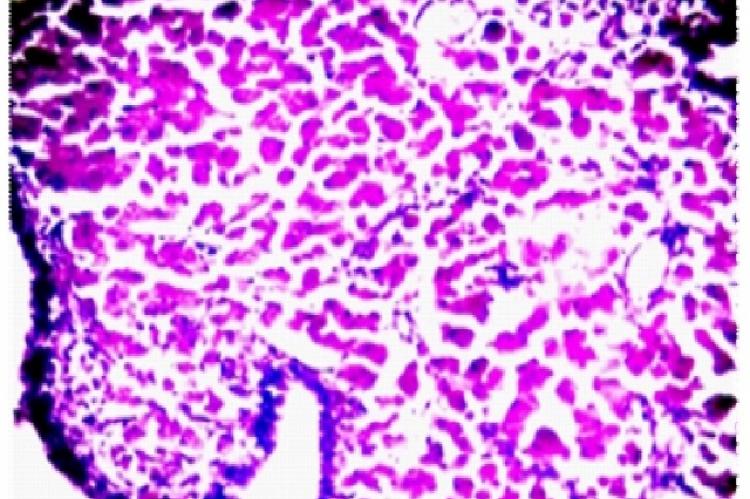Malakoplakia is an uncommon inflammatory condition usually affecting the genitourinary tract characterized by an infiltrate of large granular eosinophilic macrophages containing unique concentrically laminated siderocalcific structures called Michaelis-Gutmann bodies. It has been associated with infectious, tumors and immunocompromised states. A 40-year-old woman, mother of 7 children presented with pain abdomen, polymenorrhagia and fever for 4 days duration. Total abdominal hysterectomy was performed. Specimen of uterus with cervix with bilateral adnexae was received. Left fallopian tube showed hydrosalpinx grossly. Section studied from the tube showed showed infiltration of the lamina propria by histiocytes with lymphocytes. The histiocytes (von Hansemann cells) had dense eosinophilic cytoplasm, vesicular nuclei and micronucleoli . There were round, basophilic intracellular inclusions (Michaelis-Gutmann bodies) of varying sizes, many calcified .Most of these inclusions were positive with the periodic acid-Schiff stain and focally for Perls' Prussian blue stain. The muscularis and serosa layer also showed chronic inflammatory infiltrate. Malakoplakia at all sites share the same histological features, with the presence of Michaelis-Gutmann bodies being pathognomic. It can clinically simulate tumours and can be associated with tumours, infections and immunosuppression. Inefficient killing of the microorganism by the macrophages underpins the pathogenesis. Malakoplakia of female genital tract is a rare entity. To the best of our knowledge, we are presenting the third reported case of malakoplakia of fallopian tube in the literature.
View:
- PDF (760.27 KB)


